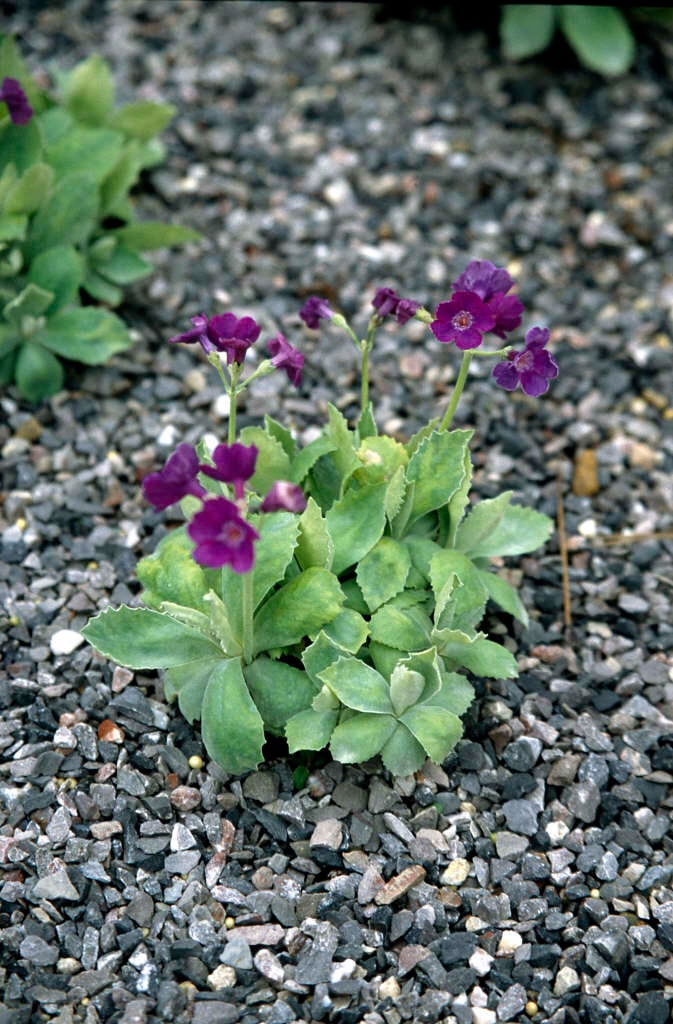Size
Ultimate height
0.1–0.5 metresTime to ultimate height
2–5 yearsUltimate spread
0.1–0.5 metresGrowing conditions
Moisture
Moist but well–drainedpH
Acid, Alkaline, NeutralColour & scent
| Stem | Flower | Foliage | Fruit | |
| Spring | Purple | Green Grey Silver | ||
|---|---|---|---|---|
| Summer | Green Grey Silver | |||
| Autumn | Green Grey Silver | |||
| Winter | Green Grey Silver |
Position
- Full sun
- Partial shade
Aspect
South–facing or East–facing
Exposure
Exposed or Sheltered Hardiness
H5Botanical details
- Family
- Primulaceae
- Native to GB / Ireland
- No
- Foliage
- Semi evergreen
- Habit
- Clump forming
- Genus
Primula are herbaceous or semi-evergreen perennials, forming a basal rosette of simple leaves, with salver-shaped or bell-shaped flowers which may be solitary or carried in an umbel or in whorls on an erect stem
- Name status
Accepted
- Horticultural Group
- Auricula section primulas are evergreen perennials with leathery, often farinose foliage and simple umbels of salver-shaped flowers which are usually pink, purple or yellow
How to grow
Cultivation
Grow in moist but well-drained, humus-rich, slightly alkaline soil in full sun with some midday shade or partial shade. Although hardy it is recommended for cultivation in an alpine house in the south of England
Propagation
Propagate by detaching offsets in autumn or early spring
Suggested planting locations and garden types
- Cottage and informal garden
- Gravel garden
- Patio and container plants
- Rock garden
- City and courtyard gardens
Pruning
Deadhead after flowering
Pests
May be susceptible to aphids, glasshouse red spider mite, slugs, leafhoppers and vineweevils
Diseases
May be subject to a virus, primula brown core and grey moulds
Love gardening
Sign up to receive regular gardening tips, inspiration, offers and more
View our Privacy Policy
Get involved
The Royal Horticultural Society is the UK’s leading gardening charity. We aim to enrich everyone’s life through plants, and make the UK a greener and more beautiful place.
